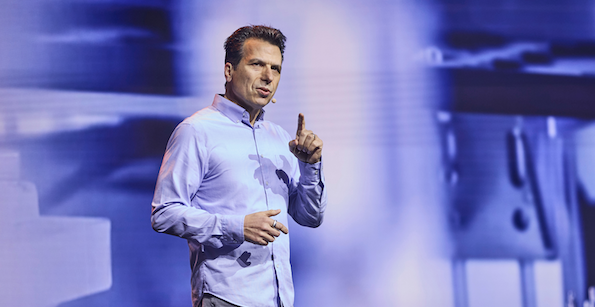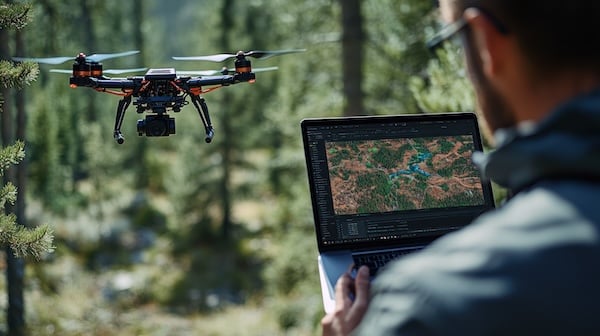As infrastructure across the country ages, the transition to digital solutions in the construction and civil engineering sectors has become imperative. This article delves into the successful implementation of Autodesk's digital delivery system by the Montana Department of Transportation (MDOT), facilitated by U.S. CAD. The story of the Wolf Creek Bridge, which burned down in a wildfire, highlights the efficiency and speed of digital transformation in infrastructure projects.
Aaron Powell and Melanie Zubach from U.S. CAD led the initiative to help MDOT implement Autodesk software. Melanie, with 18 years of experience at U.S. CAD, has been instrumental in training users and working with government infrastructure accounts. Aaron, a solutions consultant at U.S. CAD for over nine years, has been working closely with MDOT for the past five years. They are interviewed by Chad Smeltzer an infrastructure professional with a diverse background in public works, wastewater, and collection system analysis.

Chad Smeltzer interviews Aaron Powell and Melanie Zubok from U.S. CAD, An ARKANCE Company in the original podcast.
Chad Smeltzer: Aaron, can you tell us about the plan to transition MDOT to Autodesk software?
Aaron Powell: MDOT was in the midst of transitioning from older software to Autodesk and wanted to adopt a cloud solution. This transition started about four and a half years ago. The goal was to eliminate internal servers for design departments and utilize cloud storage for greater efficiency and collaboration.
The Wolf Creek Bridge Incident
The turning point came when a wildfire destroyed the Wolf Creek Bridge, isolating the Denton community. This urgent need accelerated the adoption of Autodesk software to help make the design and building of the new bridge move more quickly.
CS: When this project started, you were already in the proof of concept phase with MDOT. Did the incident push them to use the technology faster?
AP: Absolutely. The bridge department at MDOT had been an advocate of Autodesk's suite, including Revit, Inventor, Infraworks, and Civil 3D. When the bridge burned, they had to rebuild it quickly. Using Autodesk software, they demonstrated that they could complete the design and construction in months instead of years, despite supply chain challenges. They revised their model during construction to address issues with concrete and rebar supplies, showcasing the flexibility and efficiency of the digital tools.
Overcoming Resistance to Change
CS: Melanie, what are some reasons DOTs are reluctant to adopt new technology?
Melanie Zubach: Change is hard, especially for an aging workforce used to older technologies. However, younger engineers coming out of college are familiar with Autodesk and are driving the shift towards digital solutions. Our success with MDOT is now being shared with other DOTs, showcasing the benefits of digital delivery.
CS: How is U.S. CAD helping other DOTs and government agencies adopt these technologies?
MZ: It's a networking game. We started with the bridge group at MDOT, running proof of concept and pilot projects. The success in the bridge group led to wider adoption across other departments. Our technical expertise and the hands-on support from consultants like Aaron were crucial. We’re now telling the Montana bridge story to other DOTs to demonstrate the value of these tools.
The Impact of Digital Delivery
The implementation of Autodesk software transformed communication and collaboration at MDOT.
AP: Not only did internal communication improve, but external communication with consultants and contractors became seamless. With real-time collaboration on 3D models, everyone could see and contribute to the project, speeding up decision-making and construction processes. For instance, the environmental engineers, road designers, and bridge department could all work simultaneously on different aspects of the project, ensuring alignment and reducing delays.
Lessons Learned and Best Practices
CS: What are some best practices you learned from the MDOT project?
AP: It's important to involve a diverse group of stakeholders from the beginning. Engaging innovative and forward-thinking individuals ensures better adoption of new technologies. Continuous communication and having buy-in at all levels were key to MDOT's success. They had buy-in from executives and from those on the ground, making the transition smoother and more effective.
MZ: Another key lesson was the importance of comprehensive training and support. We didn’t just introduce the software; we provided training from fundamentals to advanced levels and continued support through mentoring projects. This ensured that the MDOT team could effectively use the tools and see immediate benefits in their workflows.
Communication
CS: Aaron, can you speak to how communication played a crucial role in the project’s success? It sounds like all users from engineers to construction workers were on the platform and it streamlined the process.
AP: To begin, ability to create and share detailed 3D models allowed all stakeholders to visualize the project in real time. This was particularly important for public approval. People who lived in the area could see exactly what the bridge would look like, making it easier to communicate design intent and address concerns.
CS: How did this help with project management and decision-making?
AP: The real-time updates and collaborative tools meant that changes could be made quickly and efficiently. For example, when there were supply chain issues with guardrails, the team could quickly adjust the design and keep the project on track. This level of flexibility and responsiveness is a game-changer for infrastructure projects. In addition, the original design had fewer but larger pilings for support. Due to supply chain issues, it would have taken too long to get the larger pilings. The contractors were able to suggest using more pilings but at a smaller diameter so that construction could continue at speed.
Looking Forward: Digital Twins and Beyond
CS: Can you talk a bit about how the future of infrastructure lies in digital twins, which extend beyond design and construction to operations and maintenance?
AP: Digital twins, built from BIM models, incorporate data from various technologies like drones and scanners. This allows for comprehensive asset management, enabling agencies to predict maintenance needs and manage costs effectively.
MZ: The civil infrastructure sector is catching up to the architecture realm in adopting digital twins. This technology will help extend the life cycle of infrastructure and improve overall project efficiency. Operations and maintenance (O&M) capabilities are the next step, allowing for better long-term management of assets.
Conclusion
The story of the Wolf Creek Bridge is a testament to the power of digital transformation. With Autodesk software and the support of U.S. CAD, MDOT not only rebuilt a critical piece of infrastructure quickly but also set a precedent for other DOTs to follow. The success of this project underscores the importance of embracing digital solutions to meet the growing demands of modern infrastructure.
This article is based on a podcast from U.S. CAD; watch the whole episode here: “The Wolf Creek Burning Bridge Autodesk Digital Delivery System.”
This article is sponsored by U.S. CAD, An ARKANCE Company.





Share This Post